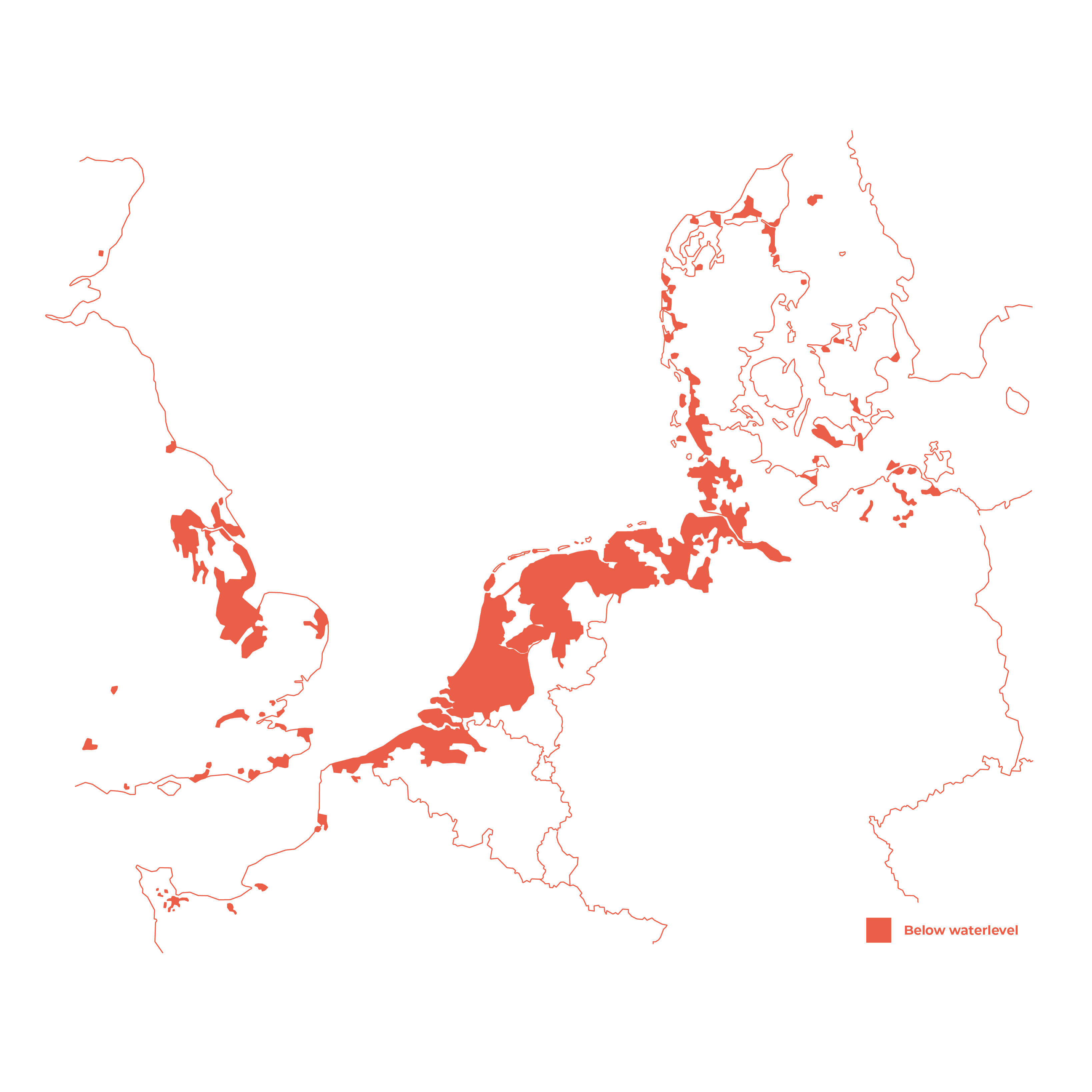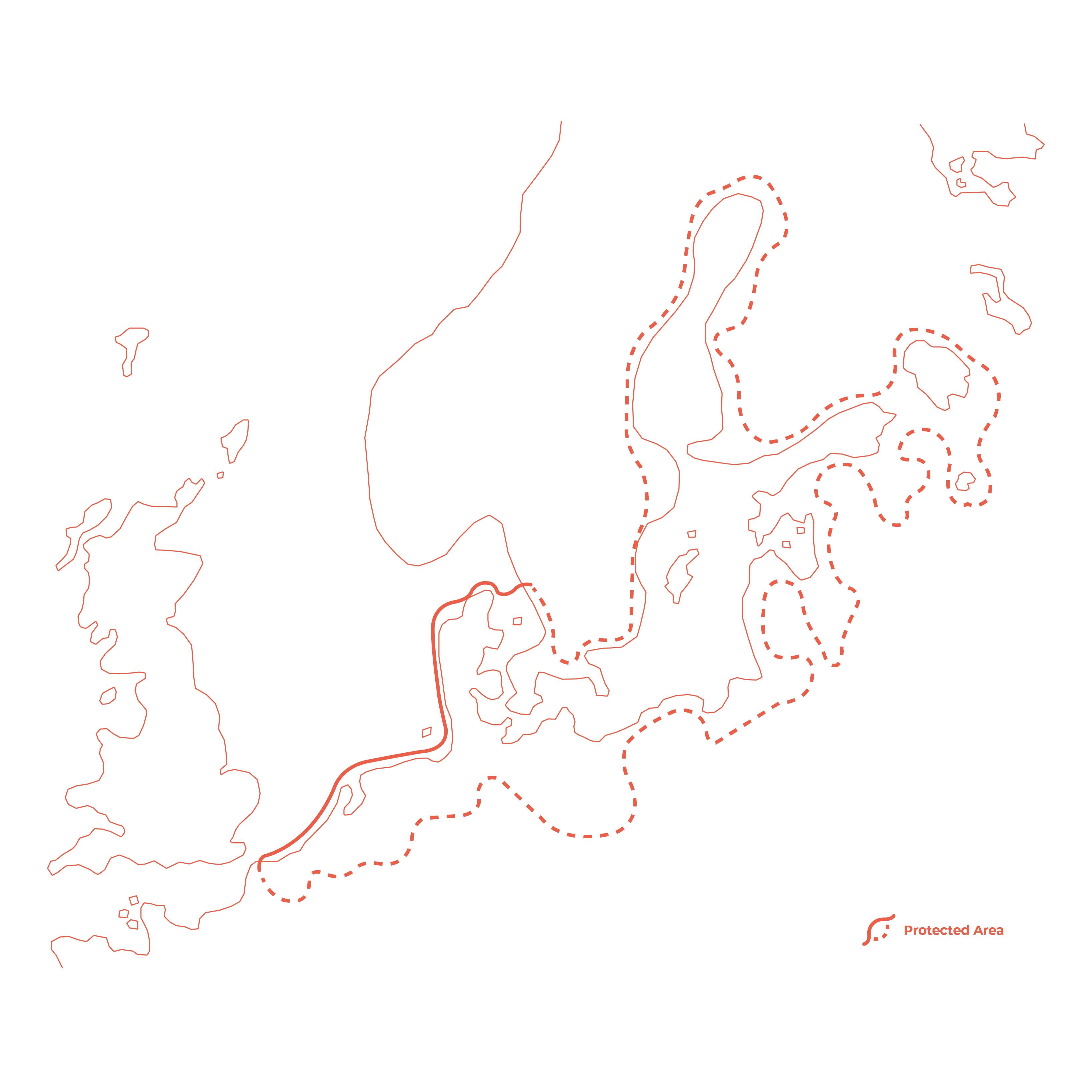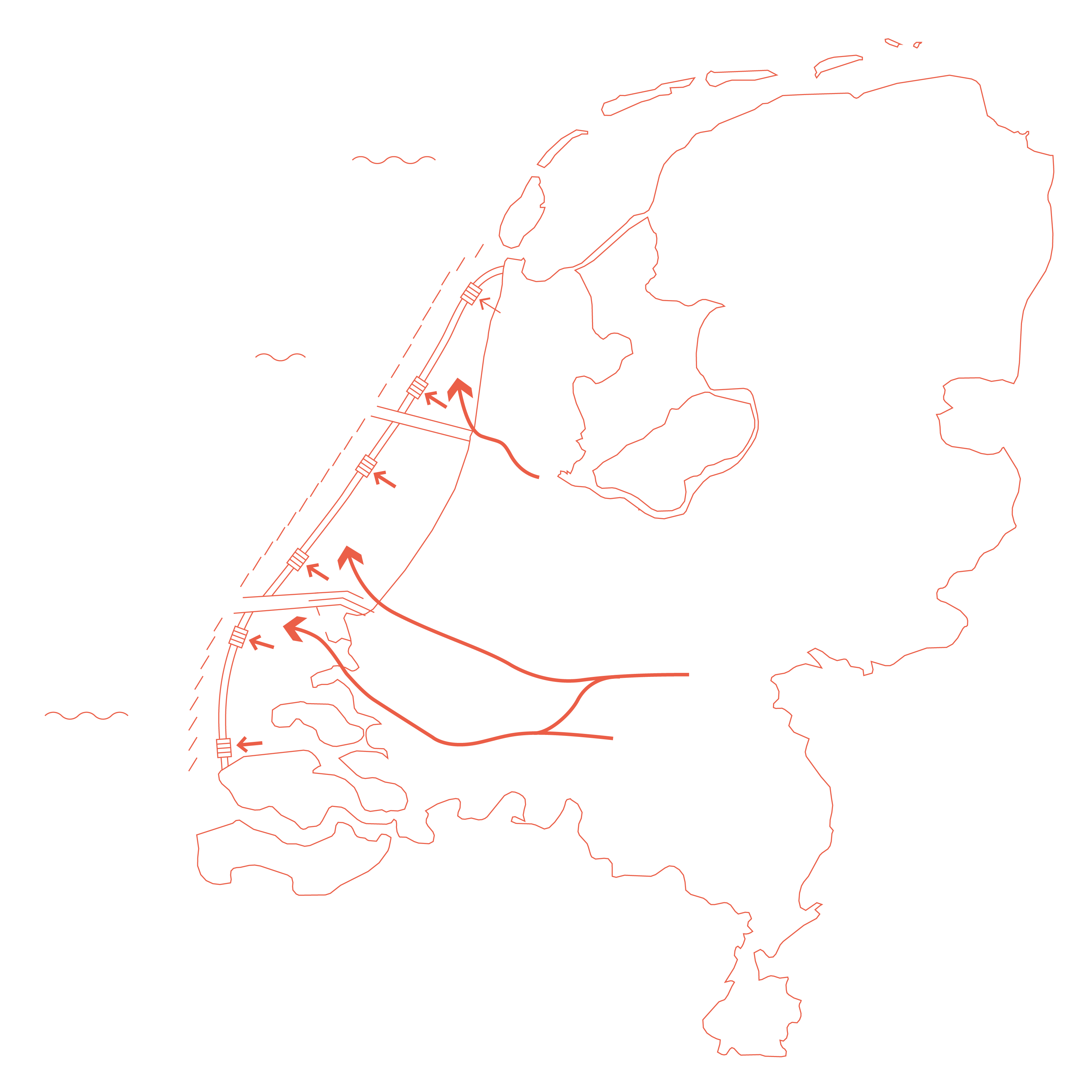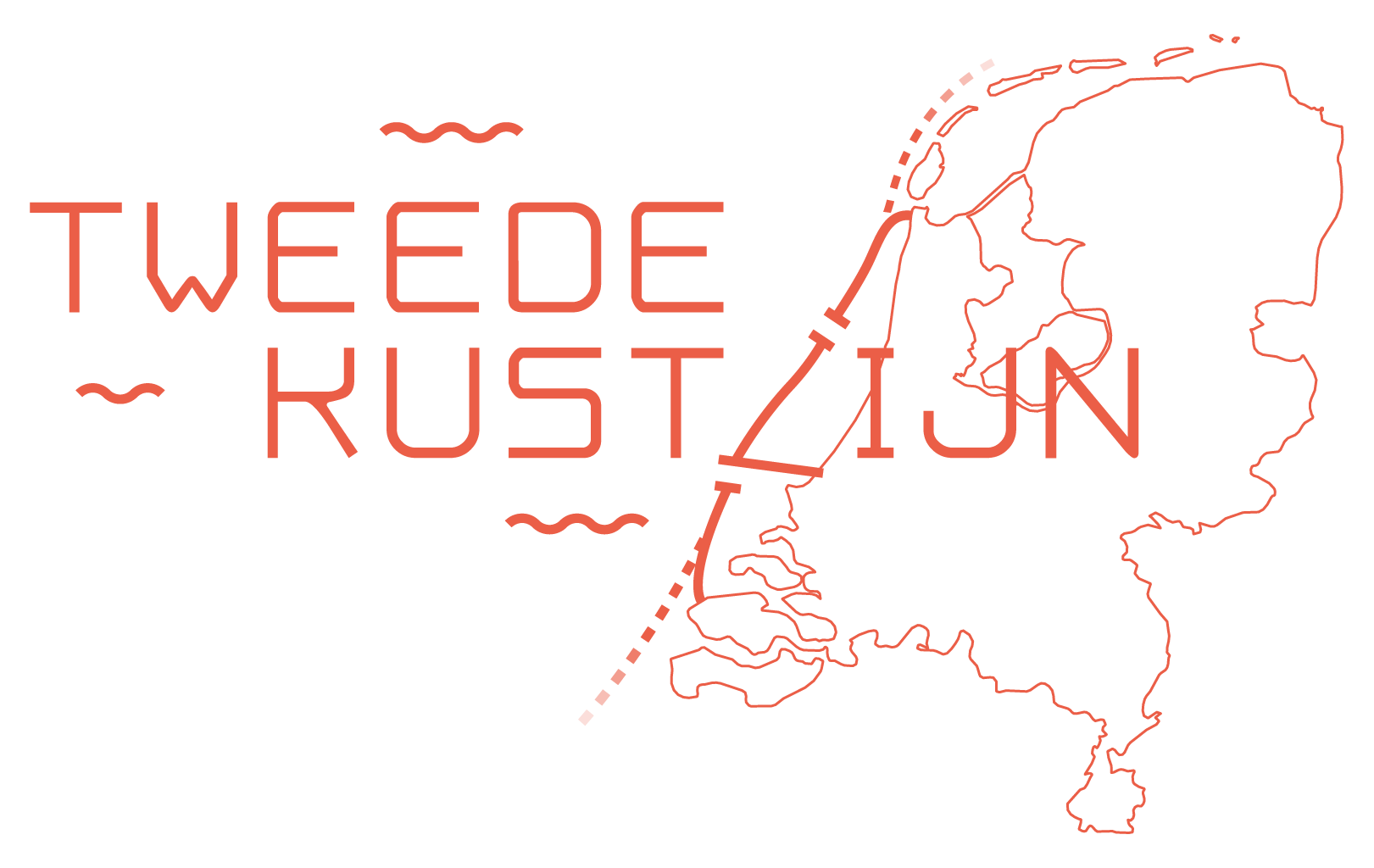Europe must act now on sea level rise
Nature Communications’ published a study, commissioned by the European Commission, that maps the damage of sea level rise for Europe. The conclusion is that Europe must spend between 1.8 and 2.8 billion euros per year on dyke improvements to prevent hundreds of billions of euros per year in damage from flooding. The report has no doubts: a third of Europe’s coast, from Norway to Greece, will have to be reinforced before 2100. That calls for a European Delta Plan.
Sea level rise is still slow at the moment, but the IPCC (Intergovernmental Panel on Climate Change) predicts that the rate will accelerate from 2050 and that this will have major consequences.‘ Let’s look three centuries ahead, the period in which the temperature may not fall, then
we have to take into account 5 to perhaps 8 m sea level rise.


European seawall
We can protect the most endangered parts of Western Europe from Calais to Gothenburg against a sea level rise of at least 8 meters by constructing a second coastline. This plan was developed in 2010 by the engineering duo Rob van den Haak and Dick Butijn.
It is a wide dike built in sand, 25 km off the coast, which can be constructed per basin. Starting in the lowest-lying delta on the coast of Western Europe, the Netherlands. In a southerly direction, the seawall can be extended with a Flemish Basin and eventually reach Calais, and in a northerly direction it can be extended via Germany and Denmark to Göteborg.
The construction of the dike starts in the Netherlands with three basins from Walcheren in Zeeland to Den Helder in North Holland. A water level of 0 NAP has to be maintained in the coastal basins so that the rivers can flow out without the hindering influence of sea level rise or storm at sea and the sea dike itself can withstand a significant rise in sea level.
The dike prevents river dikes, pumping stations and bridges from constantly having to be adapted to the rising sea level, ensures sufficient fresh water in dry times and counteracts salinization of the agricultural land.
European seawall
We can protect the most endangered parts of Western Europe from Calais to Gothenburg against a sea level rise of at least 8 meters by constructing a second coastline. This plan was developed in 2010 by the engineering duo Rob van den Haak and Dick Butijn.
It is a wide dike built in sand, 25 km off the coast, which can be constructed per basin. Starting in the lowest-lying delta on the coast of Western Europe, the Netherlands. In a southerly direction, the seawall can be extended with a Flemish Basin and eventually reach Calais, and in a northerly direction it can be extended via Germany and Denmark to Göteborg.
The construction of the dike starts in the Netherlands with three basins from Walcheren in Zeeland to Den Helder in North Holland. A water level of 0 NAP has to be maintained in the coastal basins so that the rivers can flow out without the hindering influence of sea level rise or storm at sea and the sea dike itself can withstand a significant rise in sea level.
The dike prevents river dikes, pumping stations and bridges from constantly having to be adapted to the rising sea level, ensures sufficient fresh water in dry times and counteracts salinization of the agricultural land.

Step by step
The European Seawall will be built in phases, depending on the need of the moment. It can adapt step-by-step and flexibly to the speed of sea level rise, changing insights, scientific and technical progress and the development of a circular economy.
This approach is also cheaper, because the depth is less than 20 m almost everywhere and the sand can be extracted more cheaply.
The costs of a dyke from France to Sweden amount to 300 to 500 billion euros and, spread over 75 to 100 years, can easily be afforded by the member countries.
The big advantage of this plan is that between the existing and the new coast the buffer lakes and the Baltic Sea will maintain a level around the current sea level. As a result, not only does the existing infrastructure of the entire Western European coastal regions remain intact, but excess river water can also be temporarily collected in these buffers at high discharges, which reduces dependence on large pumps.

Also southern europe
As the most densely populated and lowest-lying country in Europe, where major rivers meet, the Netherlands is the most suitable location to start with its own Delta Plan 2.
European consultation will be necessary to connect northern and southern neighbors to the new Western European coastline.
The report requested by the European Commission also indicates the vulnerability of a large part of the coasts of southern Europe. An effective solution, which also protects North Africa against sea level rise, is to close off the Strait of Gibraltar.
Also southern europe
We only have about 30 years left before the sea rises at an accelerated rate. That is short notice to be ready in time to prevent flooding in Europe. We now have to think seriously, starting with the Netherlands, followed by plans for North-West Europe and for Southern Europe with North Africa in order to arrive at a European Delta Plan soon.
Also southern europe
As the most densely populated and lowest-lying country in Europe, where major rivers meet, the Netherlands is the most suitable location to start with its own Delta Plan 2.
European consultation will be necessary to connect northern and southern neighbors to the new Western European coastline.
The report requested by the European Commission also indicates the vulnerability of a large part of the coasts of southern Europe. An effective solution, which also protects North Africa against sea level rise, is to close off the Strait of Gibraltar.
We only have about 30 years left before the sea rises at an accelerated rate. That is short notice to be ready in time to prevent flooding in Europe. We now have to think seriously, starting with the Netherlands, followed by plans for North-West Europe and for Southern Europe with North Africa in order to arrive at a European Delta Plan soon.
Subscribe to our newsletter
Drie keer per jaar brengt Initiatiefgroep Tweede Kustlijn een Nieuwsbrief uit over alle ontwikkelingen, nationaal en internationaal, die verband houden met de discussie over de Tweede Kustlijn.
